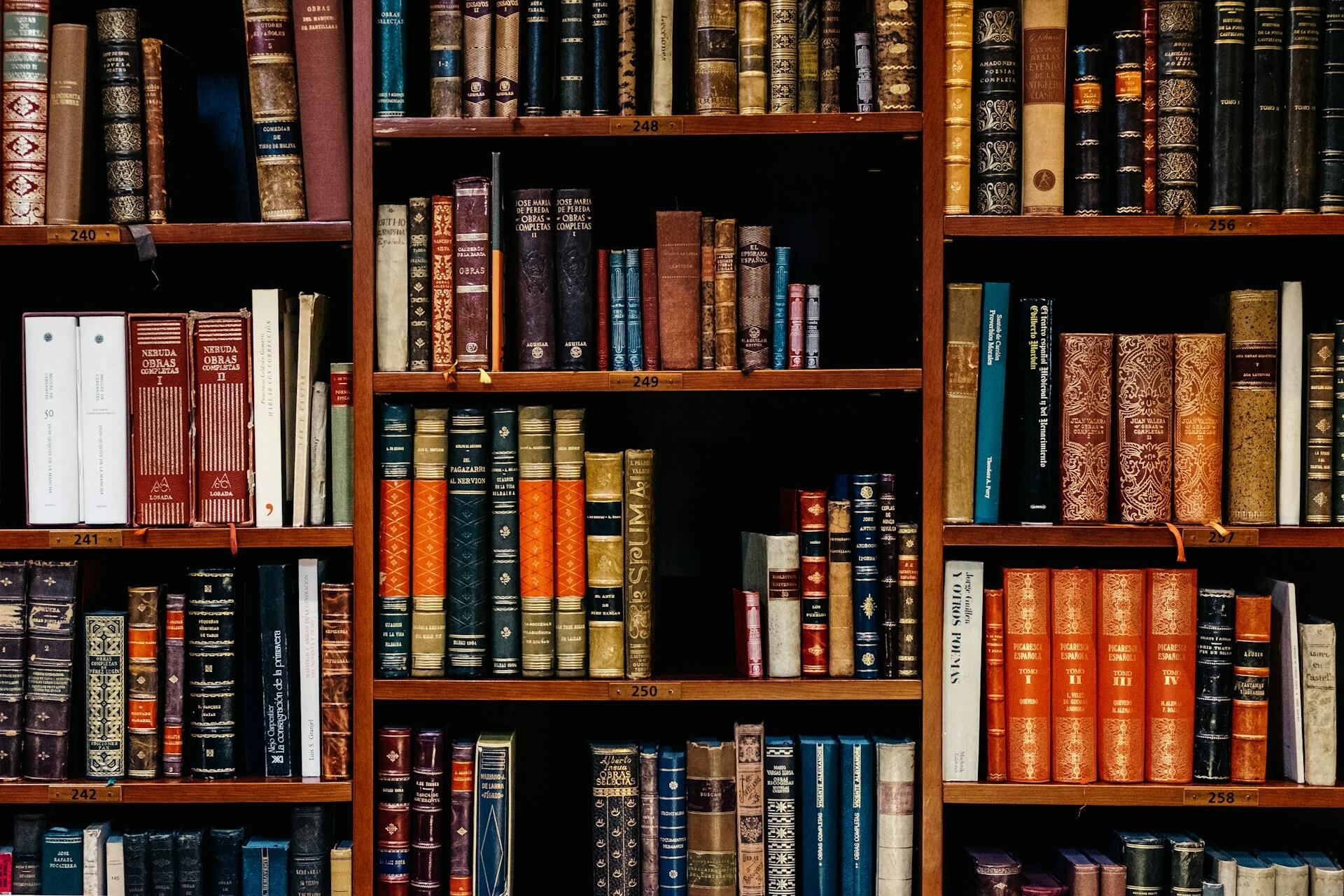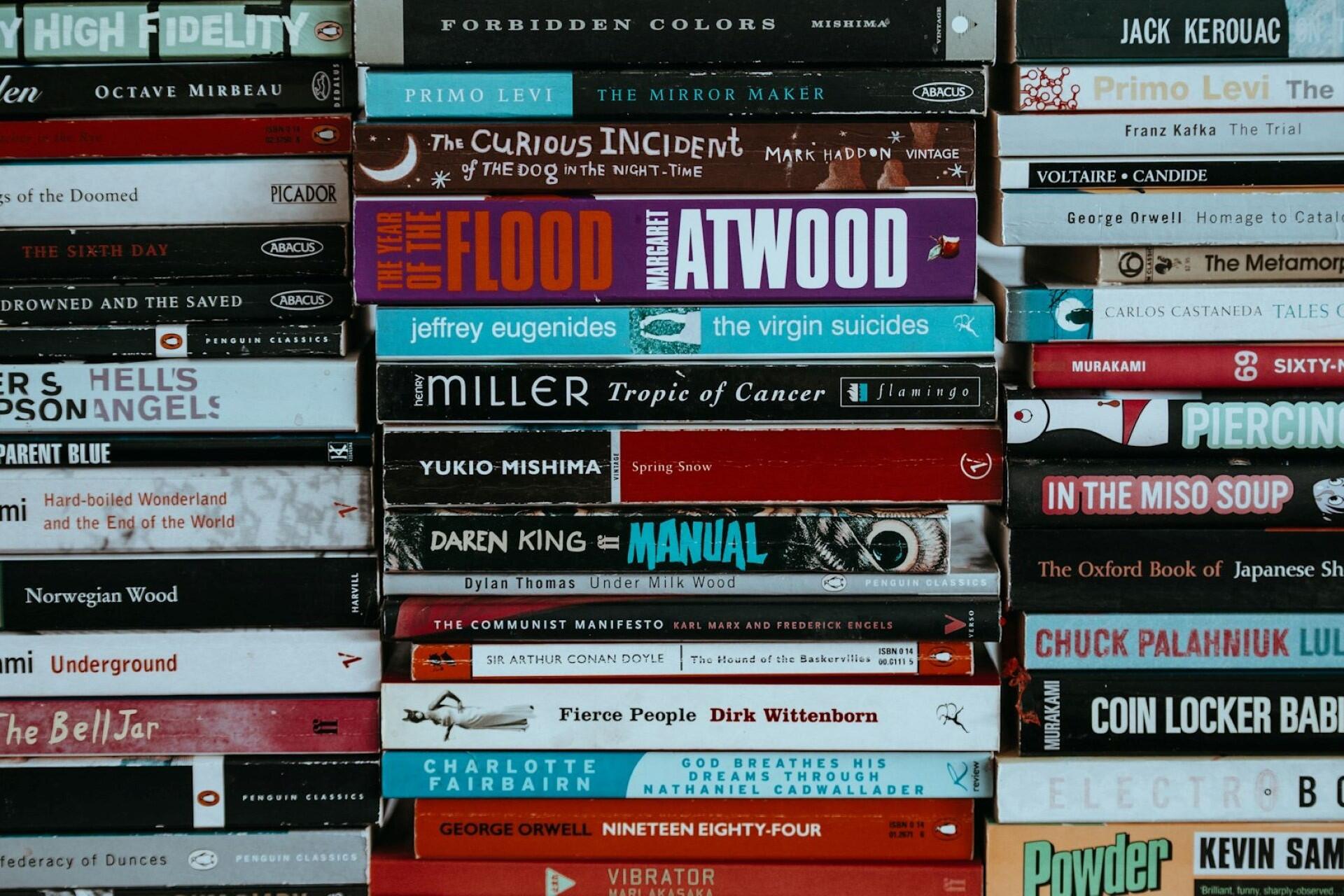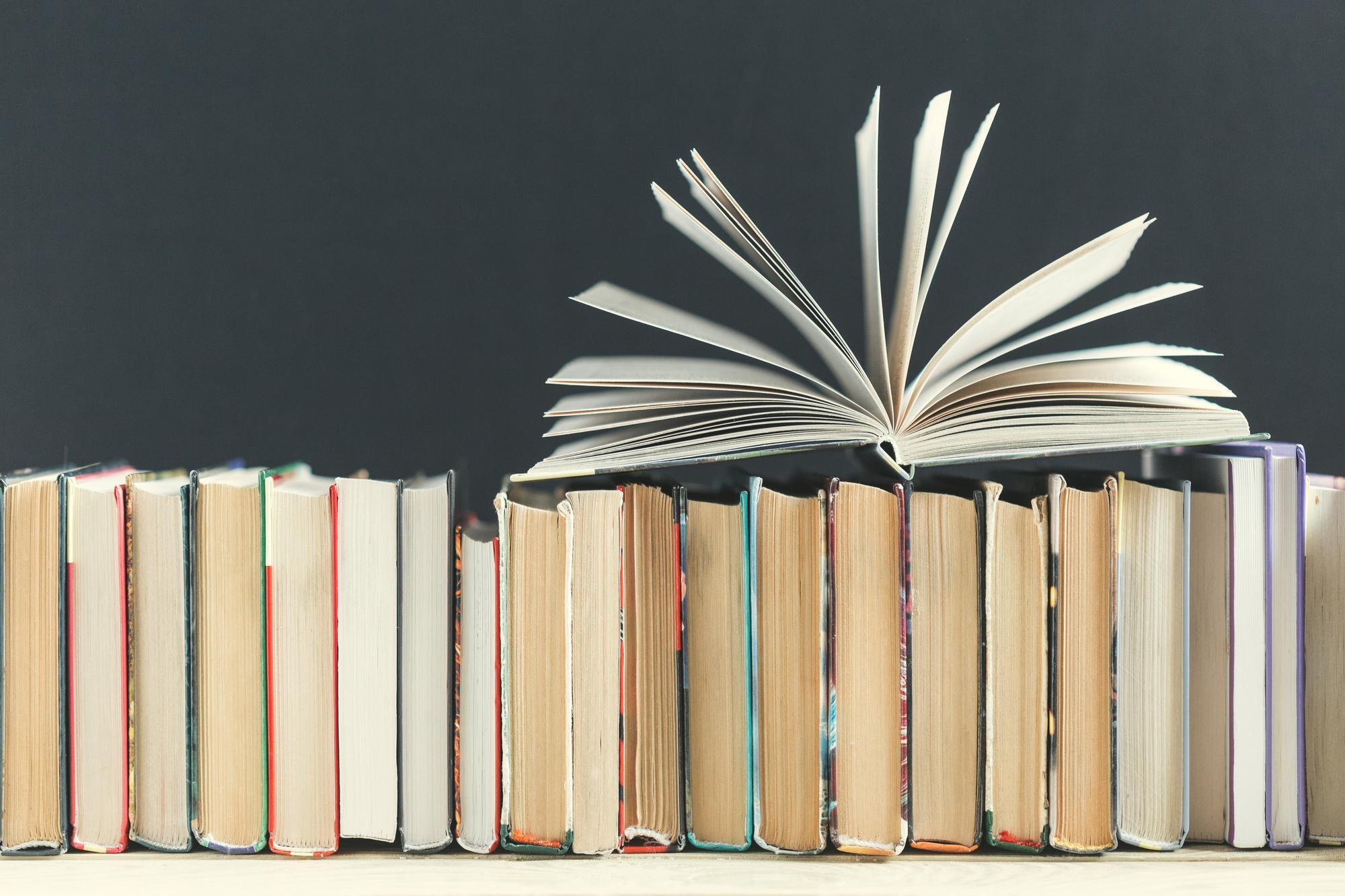American literature has a rich history of storytelling, essays, poetry, and drama. Its works reflect America's political landscape and the country's evolving cultural and social aspects. If you're studying American Literature, you'll study its historical development from early colonial writings of settlers to contemporary experimental forms of fiction, how historical events influenced literary works, and the social, political, and cultural context behind these works. Let's find out more.

What Is American Literature's History?
Familiarizing with these periods is crucial to enrolling in the American literature class. Each period represents how American literature has evolved over the centuries. Considering the United States's population and diversity, its literature is divided into movements. Below are the most common periods of American literature from its beginning to the present.

See how you can discover the most effective English courses online here.
Colonial Period (1607-1775)
The colonial period refers to the time before the Revolutionary War. Literary works from this time were practical, religious, and historical in nature.
If you want to explore the characteristics of American literature of the Colonial periods, the following are some literary works that were written by the religious settlers and historical figures of that time;
- The first European settlers from North America in the US wrote about their experience in the early 1600s. It was the beginning stage of American literature, where the vocabulary and theme were straightforward and derived from the literature of Great Britain.
- John Smith effortlessly wrote about his experience as an English explorer and the history of Virginia. These works are known to be among the best and earliest works of American literature.
- Other personalities who shaped American literature were John Winthrop and Nathaniel Ward. The books were mainly focused on the religious context.
- On the other hand, Anne Bradstreet wrote the earliest and first collection of poetry, called the Tenth Muse Lately Sprung Up In America. It was the first poetry to be written in and about America.
Some other great writers who contributed to the colonial period of American literature are;
- Cotton Mather
- Phillis Wheatley
- William Bradford
- Mary Rowlandson
American literature mainly consisted of non-fiction and historical works from the early days of the colonial period. It was written by British settlers who populated the communities to become colonies in the United States.
Here is where you can discover English classes in Houston.
Revolutionary Period (1765–1790)
The revolutionary period of American literature began a decade before the Revolutionary War and lasted for 25 years. American writers had explored and adopted the Puritan literary style by this time. Moreover, literary pieces' religious and historical themes were distinctly centered on American experiences.
During the revolutionary period, writers developed a liking for nature, science, innovation, and freedom, evident in the literary works produced during this era.
This period was not called Revolutionary only because of the war; it was a period that standardized the authentic version of American literature. Some literary writers that contributed to American literature in this period are;
- James Madison
- Thomas Paine
- Alexander Hamilton
- Thomas Jefferson
- Noah Webster
- Benjamin Franklin
During the Revolutionary period, literature was not just an art but a tool for change. Pamphlets, speeches, and essays shaped public opinion, inspiring Americans to fight for independence. Thomas Paine’s Common Sense and The Federalist Papers played a crucial role in uniting people behind the cause of a new nation.
The Early National Period (1775–1828)
The early national period of American literature features some notable and exquisite works of comedy, stage, and novels.
Independence, individualism, freedom, nationalism, and slavery were prominent themes of this era. American writers like Thomas Jefferson and Patrick Henry also used similes and metaphors to show the American audience that independence from Great Britain was necessary.
Some literature pieces Patrick Henry wrote today are widely taught in American literature courses. The notable works are "Federalist & the Anti-Federalist Paper" and "Swords of Freedom – Man of Honor."
Some remarkable literary achievements by Thomas Jefferson in this era are his only full-length book and notes called "The State of Virginia." On the other hand, the Declaration of Independence and his letter were noteworthy American literary achievements of that time.
Some more achievements in American literature during this period include;
- The first American comedy play was written and performed in this era, the early national period. Royal Tyler wrote the comedy stage play "The Contrast" in 1787.
- William Hill wrote the first American novel, "The Power of Sympathy," in 1789.
James Fenimore, Charles Brockden, and Washington Irving also made remarkable contributions to American literature by writing American fiction during this period. Edgar Allan Poe and William Cullen Bryant also produced poetry collections that were very different from British poetry.
The Romantic Period (1828–1865)
The romantic period, also known as the American Renaissance, was the era of Transcendentalism, the first American literary movement. This period is accepted as the greatest period for American literature. Self-reliance and imagination were the main themes in literature of this period. Other themes include nature, romance, and faith.
Start taking an English class near me today.

In this period, the symbolism was widely used by romantic authors, novelists, and writers. During the romantic era, love, fear, sorrow, and rebellion were woven into the literature, especially in the tales of Edgar Allan Poe.
Walt Whitman, Henry David Thoreau, Herman Melville, Ralph Waldo Emerson, and Margaret Fuller were some famous writers who made considerable contributions to this period.
The significant contributions and achievements of American literature in this period are listed below;
- The collection of poetry, "The Voices of the Night," written by Henry Wadsworth Longfellow
- Short stories composed by Harriet Beecher, Melville, Hawthorne, and Poe
- During this period, critique writing began. It was initiated by James Russel Lowell, Poe, and William Gilmore Simms.
- Between 1853 and 1859, American novels such as Cotel by William Well Brown and "Our Nig” by Harriet E. Wilson were published.
Realism and Naturalism (1870–1914)
The next period in the history of American literature is known as the realism and naturalism period. It resulted from the American Civil War, industrialism, and Reconstruction. The civil war in the US resulted in massive loss of Americans and bloodshed, making reality and nature the primary expressions of the literary works.
The romantic and imaginary notions from the American Renaissance were replaced by harsh reality, loss of life, and a natural perspective of American life. The literary works of Henry James, William Dean Howells, and Mark Twain are notable works of this period.
American writers such as Theodor Dreiser, Jack London, and Frank Norris wrote powerful and emotional novels during that time, which are still read in American literature courses. The themes of this period were realism, frankness, tragedy, crudeness, and nature.
The realistic era of American literature started to fade by the 1900s. The period from the beginning of 1900 until 1914 marked the Naturalistic period of American literature. Unlike realism, the naturalistic period claimed to accurately represent human life. This period was also a post-Darwinian hypothesis. Hence, many naturalistic writers took their inspiration from Darwin's theory and developed remarkable characters and storylines.
Notable works by the writers of that time include;
- Edith Wharton made remarkable contributions to this period by writing three classic and mind-blowing novels, including "The House of Mirth" in 1905, "Ethan Frome" in 1911, and "The Custom of the Country" in 1913.
- Mark Twain was an acclaimed writer who combined realism and humor in his writing. His notable works from this period are: "Adventures of Huckleberry Finn" (Novel – 1885), "Life on the Mississippi" (Travel Narrative – 1883), and "The Man that Corrupted Hadleyburg" (Short Story – 1899)
- Another naturalist novel is "His Sister Carrie" (1900) by American writer Theodor Dreiser.
- Other novels that profoundly and accurately depict the reality of life, nature, and capitalism in this period were "A Girl of the Streets" by Maggie in 1983, "The Pit" in 1903, and "The Octopus" in 1902, both by Frank Norris.
Modernism (1914–1945)
Modernism was the second most influential and literature-rich age of American literature after the American Renaissance. The period is famous as Modernism because Americans welcomed innovation and technology by the middle of the 1900s. Significant developments in technology, machinery, and science became a light of hope for America after the bloodshed and fear of the Civil War.
Modernism was an extension of realism but in a more profound way. Many writers in this period were deeply attracted to the World War and its bafflement. The novels, poems, and stories written during this period were characterized by boldness, optimism, and fear.
This period also marked the beginning of drama writing in American literature. Even though European theaters inspired the drama, it gained American expression with time. A few remarkable contributions by writers of this era are;
- Scott Fitzgerald wrote an additional piece, "The American Dream," for the Great Gatsby (1925)
- Zora Neale Hurston wrote an exceptional story about the three marriages of a black woman called "Their Eyes Were Watching God" (1937).
- Ernest Hemingway wrote two novels that profoundly portrayed the fear and disappointment of the Lost Generation of the US. These novels were "The Sun Also Rises" (1926) and "The Farewell to Arm" (1929)
- William Faulkner bid farewell to the standard literary techniques in 1929. In his piece "The Sound and The Fury," he used naturalistic monologues, stream-of-consciousness prose, and experimental writing.
The American Literary Timeline
1607–1775
Colonial & Early National Literature
Religious & historical works.
1765–1790
Revolutionary Literature
Political writings on independence.
1828–1865
Romanticism & Transcendentalism
Emotion, nature, and self-reliance.
1870–1914
Realism & Naturalism
Depictions of real life, social struggles.
1914–1945
Modernism
Experimental writing, themes of war & identity.
1945–Present
Contemporary Literature
Diverse voices, postmodern themes.
Explore the American literary movements in this video.
Why Study American Literature
Taking American literature courses opens up a gateway to inspiration and creativity while developing intellectual skills that are in demand in today's world. American literature allows one to explore and understand how literature has played an enormous role in America's history and how it has evolved from its former colonial times.
You can book English classes near me for adults here.
Here are some reasons why one should study American literature.
Enrolling in an American literature class can open up countless doors for learning and development. It expands our thinking horizon by giving us the critical thinking ability to see beyond our perception.

American literature is a great way to understand and know the past. You can learn about the history you didn't experience, traditions you are unfamiliar with, and customs you do not perform. Moreover, the prominent changes in American literature history ignite a spark of imagination, forcing you to think out-of-the-box. It encourages your mind and knowledge to illustrate the experiences and times that boost our gestalt thinking.
American literature is filled with experiences, stories, and revolution. It ignites a spark that boosts curiosity, making you more vigilant about the past. Due to its rich history and diversity, many colleges and education institutions offer American literature courses and academic degrees.

How to Study American Literature
Studying American literature can be challenging if you do not have access to the right sources and guides. With so many periods to remember and countless themes to understand, it can be hard to remember or understand.
If you enroll in an American literature class, you will be able to explore and understand how literature shapes the world we live in through the art of words. Refer to the tips explained below to study the literature on America;
Step # 01 – Memorize the Historical Timeline
The first step to understanding American literature in college is to understand its historical timeline. The periodic timeline is integral, as each period showcases how American literature has evolved.
| Timeline | Period Name | Characteristic |
|---|---|---|
| 1600 – 1775 | Colonial Period | Oral stories and folk songs |
| 1765 – 1790 | Revolutionary Period | Short and narrative stories |
| 1775 – 1828 | Early National Period | Historical writing |
| 1829 – 1865 | The Romantic Period | Pieces about love, freedom, and individuality |
| 1870 – 1914 | Realism & Naturalism | Realism, fear, boldness, and self-reliance |
| 1914 – 1945 | The Modernism | Technology and hope |
| 1945– onwards | Contemporary Period | All in one |
Step # 02 – Understand the American Themes
The next step is to learn about different themes and expressions used in American literature throughout the timeline. The themes are classified as follows;
- American Gothic: American Gothic literature is rooted in European Gothic literature. Any literary piece that expresses the emotion of horror, irrationality, madness, and terror within the US borders is considered American Gothic. Moreover, it also combines other elements such as religious, racial tension, and wilderness.
- Romanticism: Romanticism was an artistic and literary movement in America from 1830 to 1865. It refers to expressing a sense of freedom, independence, and spirituality.
- Dark Romanticism: Dark romanticism gained immense popularity between 1836 and 1840 as a subgenre of romanticism. This subgenre grew out of the period of Transcendentalism, when sin, evil, and hatred were on the rise.
- Confessional Poetry: It focuses on real-life experiences and history. Poetry can include anything from autobiographical experiences to personal emotional traumas.
What Do You Learn in American Literature?
American literature is a great way to learn about America's history, culture, and social evolution through literary works.
College students or avid readers can engage with fiction, poetry, novels, and essays from the different literary periods, developing critical thinking, analytical, and writing skills while they do.
Here are some of the topics that you could cover. See if any would be of interest to you:
- The Evolution of Literature – How American literary movements changed from the colonial era to modern fiction.
- Major Writers & Works – Studying influential authors such as William Faulkner, John Steinbeck, James Baldwin, and many more.
- Themes in American Literature – Understanding social, historical, and philosophical themes like identity, war, freedom, and the American Dream.
- Literary Analysis & Writing Skills – Learning to analyze novels, poetry, and essays, and improving critical writing abilities.
- Cultural & Historical Context – Exploring how literature reflects key moments in American history, such as the Civil War, the Great Depression, and modern social movements.
Major Themes in American Literature
The changing social, political, and cultural landscape of America means that themes change regularly, but a few themes in particular seem to transcend the different periods of American literature.
Here are some of the most common ones to look out for.
The American Dream
According to the American Dream, anyone can succeed through hard work and determination. The classic The Great Gatsby is just one example of American literature that deals with the theme of the American Dream.
Individualism and Self-Reliance
For writings on the power of the individual to shape their own life and destiny, look no further than Ralph Waldo and Henry David Thoreau, who regularly wrote about self-reliance and independence.
Race and Social Justice
American literary works regularly examine race, identity, and social inequality in America. You can find examples from classic to contemporary American literature from any era.
War
American authors, including Walt Whitman and Ernest Hemingway, have explored war, loss, trauma, and resilience in their writing.
Nature and the American Frontier
Look no further than authors like James Fenimore Cooper and Jack London for works on opportunity, freedom, and danger, as well as the fine line between civilization and wilderness that was and is ever-present throughout America's history.

Study American Literature with Superprof?
American literature is a diverse and rich subject of narrative techniques, storytelling steps, and prose derived from different social and cultural values. Studying American literature is a great way to become familiar with the rich history of the US.
Superprof can help you learn American literature through drama, narrative stories, poetry, and whatnot. Superprof is an online academic platform that offers students a fun and convenient learning experience worldwide. Enroll now to start learning American literature today!
























